Proactive Maintenance Strategy Drives Reliability for PEX Piping Facility
/The proactive efforts of the Uponor maintenance team power a strategy that keeps the machines running and maintains optimum PEX piping quality, while tiered empowerment drives maintenance best practices for manufacturing facility.
By Michelle Segrest, Navigate Content, Inc. — Reporting for Maintenance Technology
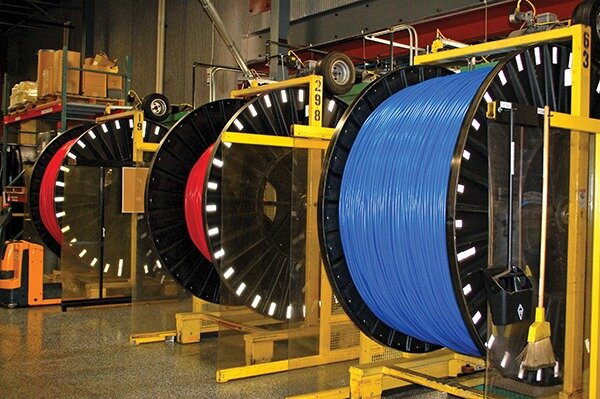
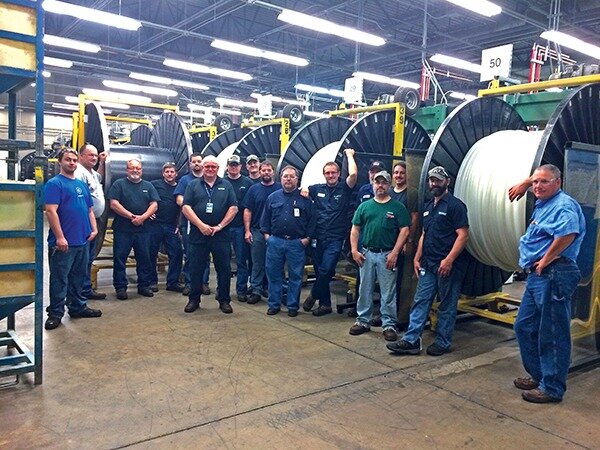
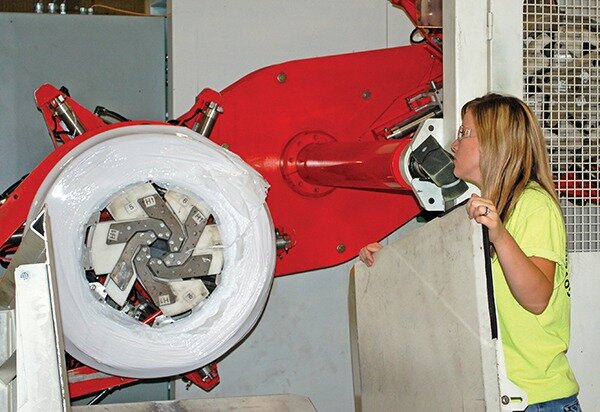
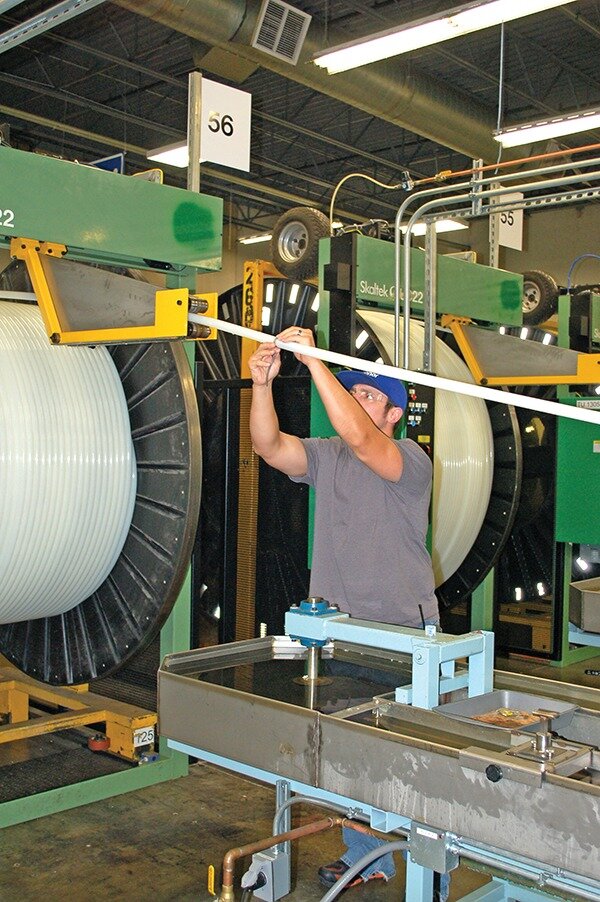

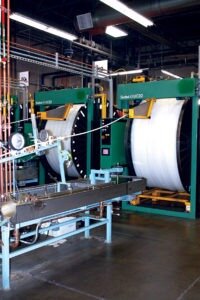
Experience, communication, constant improvement, and sustainable manufacturing practices are the building blocks of the maintenance strategy at Uponor North America. Empowerment is the core component.
“Empowerment is given at every level to ensure that the problems are fixed early. This is how the whole four-tier system is designed,” maintenance manager Ron Berg explained. “Even at the lowest level, everyone gets involved, everyone has buy-in, and everyone is empowered to make decisions. This keeps the entire team involved. It gives them ownership with the ability to contribute to the success of the maintenance goals.”
Berg and his team of 50 maintenance professionals use this blueprint to keep all of the equipment at the 338,138-sq.-ft. manufacturing facility in Apple Valley, Minnesota, (a suburb of the Twin Cities) running smoothly and efficiently. They are also responsible for all of the machines at the nearby 285,000-sq.-ft. Lakeville Distribution Center.
There currently are multiple billions of feet of Uponor-manufactured tubing in use worldwide, providing quality indoor climate, plumbing, and fire-safety solutions that elevate living comfort to a new level. This kind of mass production requires precise attention to critical maintenance objectives.
For the past decade, Berg has used his 30 years of professional experience to drive the Uponor North America maintenance team with a simple philosophy. “You’ve heard the old saying, ‘If it’s not broken, don’t fix it.’ Well, I don’t believe in that,” Berg said. “I believe that if it’s not broken you should go take a look at it anyway because you can probably find some improvements to make.”
This proactive approach works for North America’s leading producer of crosslinked polyethylene (PEX) plumbing, radiant heating and cooling systems, hydronic distribution, pre-insulated pipe, and fire sprinkler systems. It is part of the essential goal to sustainably keep equipment running to its full life expectancy and beyond.
Built on the philosophy of total productive maintenance (TPM), Berg pushes the first line of maintenance down to the operators for problem solving—only elevating major issues up the management chain. “An example of this is how you might check your own oil on your car before taking it to a car shop,” Berg explained.
“The same idea works in manufacturing. The operators check the rollers, clean the filters, and report on water and oil leaks. They have empowerment to make a decision on the spot. If the oil level is bad, they can shut down their machines and hopefully fix the problem before it happens. They don’t need approval. They know they can make the decision to fix the problem on the spot and get the machines running again. We are all about planning and getting ahead of the game. We want to be proactive and not reactive.”
Four-Tier Maintenance Strategy for PEX Piping Manufacturing at Uponor
Well-trained professionals and a well-designed organizational system are key elements in keeping the machines running at Uponor, Berg said. His maintenance team works on a five-shift schedule.
Shifts A and B work from 6 a.m. until 6 p.m., four days on and four days off. Shifts C and D work nights from 6 p.m. to 6 a.m., four days on and four days off. The fifth shift works Monday through Friday from 6 a.m. until 2:30 p.m. During any 24-hour period, A and C are on shift and B and D are on shift. This organization ensures that maintenance professionals are on site during every shift of operation.
“When I got here 10 years ago, we had 16 maintenance people and almost 70 machines and other auxiliary equipment. Now, we have 51 people and more than twice that many machines. So, staying ahead of any problems is essential.”
At the heart of this proactive outlook is Uponor’s four-tier meeting system. Tier One meets every morning at 6 a.m. and again at 6 p.m. on the shift change. This meeting involves the immediate department staff, the shift lead, and the supervisor. Issues from the previous shift are discussed, along with a review of the issues for the current shift. They explore trends in work orders and provide input on problems that need to be solved.
Examples of issues resolved at this level include determining supplies or parts that need to be ordered. There may also be input required for emergency work orders or “DINs,” which means “Do it now.” Planned maintenance issues are also discussed and can consist of preventive maintenance, predictive maintenance, and planned repairs.
The key performance indicator (KPI) at this level is a ratio of 85% planned maintenance and 15% DINs. “If we are more effective on the planned, the DIN rate is bound to come down,” Berg said. “That is our purpose for the whole maintenance program. We want to be proactive and not reactive. Reactive is a DIN. It’s a no-no. DINs cause downtime and cause people to scramble.”
Tier One brings the schedules up to the Tier Two level and lets them know what’s coming. One example is when Tier One informs Tier Two of planned maintenance on a particular machine. This allows Tier Two to move the production schedule. They can move something from one production line and put it on another line to allow time to maintain the machine with the issue.
The Tier Two meeting immediately follows the Tier One meeting. The lead from the Tier One meeting joins the leads from other meetings to discuss the issues that Tier One could not solve or to discuss solutions for issues that are causing ongoing concern. Again, the goal is to contain the problems and fix them at the lowest possible level. “If the issue cannot be resolved at Tier Two it moves to Tier Three,” Berg said. “Keeping the leads of the operation together as a team and as a synergetic group helps us take care of as much as possible and perhaps even bring it back down to Tier One.”
Tier Three involves the operations supervisors, engineering, and production scheduling. An example of a Tier Three issue would be working with the group to negotiate the planned downtime needed to work on a machine.
The buck stops at Tier Four. This is where Berg meets with other managers, vice presidents, the plant manager, and other executives to take care of anything that could not be resolved at the previous three tiers. Tier Four is where the plan going forward is made. “I can jump in and use my experience to work with the customer [operations] to fix the problem and move forward with production as soon as possible,” Berg said.
The average work order takes about 1.25 to 1.5 hours from start to finish of the repair. This includes the time from when maintenance has responded until maintenance walks away. It does not include the time involved in determining the conflict, the operator signing out of the machine, a work order request being made, or the operator issuing the work request to maintenance.
Predictive Maintenance Best Practices
There is a predictive side and a preventive side, and they do not necessarily cross over, Berg said. For example, on the predictive side, Berg and his team use infrared scans every six months to look for hot spots on all control panels and equipment.
Once a year, certification takes place—internally and with an outside certification company.
The maintenance team establishes a vibration baseline for all the equipment and then, at least quarterly, readings are taken to compare with the baseline. Vibration is checked and monitored, and if there are any variations from the baseline, next steps are taken.
Preventive Maintenance Best Practices
The preventive side involves more inspections and follow-up work orders, Berg said. Once a month, planned maintenance is performed on all of the extruders. This involves checking the air filters, checking the compressed air to see if there is any water in the filters, checking the floor troughs, and checking the re-winders. All maintenance is organized by scheduler Eric Jones, and the checks happen on a regular basis.
If there is an abnormality, a follow-up work order is issued. If there is time, it is immediately handled. “We try to minimize the effect on production,” Berg said. “If there’s an opportunity during a tool change, there may be a few minutes (usually less than an hour) when we can get in there at a time cohesive with production to get that work done. The majority of the time we do not find a lot of issues because we get ahead of it.”
Maintenance Tools of the Trade for Uponor’s PEX Manufacturing Process
Maintenance tools are not just wrenches and widgets. For Uponor, providing the right tools to get the maintenance job done involves support, resources, personnel, processes, some physical tools, and the overriding theme of empowerment.
The Four-Tier structure is one of the most valuable tools, Berg said, but the team also uses infrared scanners and vibration-analysis tools. Each maintenance professional has their own tool cart with everything required to make repairs on the spot. “When I first got here, there were no tool boxes and a lot of time was wasted when the maintenance professionals had to leave the job site and go to a central place to find a tool,” Berg explained. “We now have about 50 individual tool boxes, which helps with efficiency. We want our guys to have as much as they can handle so they can go to the location of the job one time and not have to waste time going back and forth.”
Uponor also uses a computerized maintenance management system (CMMS), and each team member has a laptop to access and monitor the online system. Work requests are generated by the operations department and distributed by radio.
The maintenance lead reviews the request, approves it, and makes the work order. The lead then assigns it to the most available and/or most talented person on staff to handle that particular job. The mechanic then reviews the job and does the work. Once the job is completed, he records his time, issues parts for the job, and enters detailed comments, which become the work history record.
“I want to ensure that what we did is documented and the checks we made are all recorded so we don’t have any unneeded duplicated efforts,” Berg said. “This also sets a standard for the next order that may be a similar complaint. They go through and look at the history and determine the heart of the problem…was it a clutch, or a brake, or a motor? They can go straight to this record and see if the same part or component failed again. This saves time. They can respond, enter it, close it, and move on to the next one.”
The Maintenance/Operations Connection for PEX Piping Manufacturing
Rusty Callier is Uponor’s director of operations and has worked for Uponor for 13 years. His department also subscribes to a tier system and works closely with maintenance to improve efficiency and decrease downtime throughout the facility. “What separates us from other manufacturers is the way we use our tier process,” Callier said. “We have metrics that tell us how our plant is operating on a daily basis. The five sections of evaluation include safety, quality, delivery, cost, and engagement.”
At Tier One, there is a board on the production floor with each cell of operation. Problems that cannot be fixed move up to Tier Two. At this stage, supervisors talk to shift leads and try to resolve issues using tools such as analysis, continuous-improvement cards, Kaizen events, A3 events, or projects.
At Tier Three, the manufacturing manager talks to the shift supervisor. The same process happens, just at a higher level. The Gemba Tier is where Callier gets involved and takes actions appropriate to what is needed to accomplish the goal. If the problem cannot be resolved at the Gemba level, it becomes a project.
The operations department has successfully used this system for five years. “We’ve been evolving processes, as well as our continuous-improvement programs, to keep pace with what we need and what we need to improve upon,” Callier said. “It’s been very successful for us. We’ve now introduced Lean Six Sigma and brought in a wider breadth of operators and managers with more cross functionality.”
Sustainability Best Practices for PEX Piping Manufacturing
Every stage of production at Uponor North America involves sustainable solutions that contribute to improving efficiency and decreasing downtime, Callier said. Uponor produces pipe from 0.25 to 4 in. diameter. Keeping this quality consistent requires running tests throughout all of the operational processes.
This begins with acceptance testing on all incoming raw material. After mixing, resin samples are taken to ensure that all components are present before the resin is loaded onto an extruder. Once on the extruder, various measurements determine whether the standards set by various listing agencies are being met.
If problems are present, quality and production groups get involved. Throughout an extrusion run, samples are collected at reel and material changes. Chemical crosslink and thermal stability are tested. These tests reveal whether the PEX is acting as it should.
At the recoil area, a secondary process applies a coating and then more dimensional and aesthetic checks are made to ensure there are no blemish, wall, or OD issues. At the recoil area there is final inspection where the quality department and operators at the line give final approval to send the product to the distribution center.
Maintenance and operations do what they can to increase sustainability throughout the facility.
For example, Berg and his team were able to make improvements on the trough cooling water that formerly had used a sand-filter system. “It had to be backwashed every three days, and this required 300 gallons of water,” Berg said.
“We researched and found a different type of filter system—a disc filter system. There are stacks of discs, and as they start to fill up, we get a differential. The water reverses, opens those discs and flushes it out using only 10 gallons of water. That’s one opportunity. We are always looking for savings and sustainability opportunities where can we make a positive impact.”
Another example is how Uponor found a way to repackage its products to save natural resources. The company has significantly curtailed its use of cardboard boxes, Callier said, and the handling at the jobsite has been significantly reduced, not to mention the trees that have been saved. With the swap of corrugated materials in favor of the use of polyethylene plastic shrink wrapping, recyclability and sustainability were significantly improved.
Biggest Maintenance Challenges at Uponor North America
Even with a proven organizational infrastructure in place, key cooperation from management, and a system of empowerment and teamwork, some challenges still exist.
The most critical at Uponor North America is the challenge of finding the right skilled talent.
“The group has been here a very long time. We don’t have a lot of turnover,” Berg said. “Years ago we had the old relays and relay logic. We’ve changed how we control our machines now. We are more digital and are more PLC-based. We have a robot. We are looking for people to come in who have that trade skill for robots and PLC. We don’t do any coding down here, per se, but we need them to understand what the coding is telling them.”
The challenge of finding high-quality skilled people is a common thread in many industrial-manufacturing facilities. “In my time, we were master of a few,” Berg explained. “I don’t have room for a plumber and an electrician and a hydraulics specialist, and so on. What we look for is a broad-experienced, broad-talented, and broad-skilled individual with some specialty in robotics. The next individual could have some specialty in hydraulics. That makes us a rounded team. The individuals who have the multiple skills are few and far between.”
Uponor is currently reviewing European apprenticeship programs and looks to develop a training-and-development program for maintenance. “The European models we’ve looked at so far are for service technicians who go out to other jobsites. Our guys stay right here,” Berg said. “You can’t go to an extruder store and buy an extruder. You have to develop that talent within your organization. But they have to have the basic skills. With an apprentice program we could get to know them, and they get to know us. Then the marriage happens, and we live happily ever after.” Uponor offers tuition reimbursement through HR and encourages the use of outside e-learning resources as parts of its current skills-development program.
CULTURE/RELIABILITY CONNECTION at UPONOR NORTH AMERICA
Uponor’s company values are to connect, build, and inspire. This translates to many processes on the manufacturing floor. Throughout the facility are reminders of these values and incentives to apply them. The Uponor brand was established in 1988, evolving from the Wirsbo brand, a company that was established in Virsbo, Sweden, in 1620. Originally, the company forged high-quality steel and weapons for the King of Sweden. Apple Valley facility celebrated its 25th year of operation, and there are now more than 500 Uponor employees in North America.
Ingrid Mattsson is Uponor North America’s director of brand management and has been with the company for 20 years. She remembers how difficult it was to redirect the customers and community to embrace a new brand-building effort. “The people here loved Wirsbo, and they were bleeding green [Wirsbo’s signature color],” she remembers. “Transitioning to a new name, logo, color, and concept can be challenging, but certainly not impossible. Building a brand is about building loyalty and building a connection. Our vision is to enrich people’s lives with our solutions. We really do believe in that, and our customers see this as we partner with them for success. Our ultimate overriding goal is to get good products into the marketplace.”
Throughout the Apple Valley facility, the Uponor signature color blue is prominent. Reminders of the culture and values decorate the hallways and the manufacturing floor with bright blue signs that may read “Sometimes the best ideas come out of the blue.”
Teamwork and empowerment are the overriding themes in the lobby, offices, and meeting rooms, and on the manufacturing floor. Mattsson said the pride of the company culture penetrates all departments and the entire company works together on common goals and initiatives.
“When you think of maintenance you think of the machines and the widgets and the pipes and the equipment,” Mattsson said. “But our maintenance team helps the entire facility with anything we need. If the sink breaks, they are there. They are there for any other thing we need, like HVAC, building automation, plunging toilets, if we lock our keys in the car… And they also work on capital projects. They serve the entire facility and not just the manufacturing process.”
UPONOR ACADEMY
Uponor Academy is a training hub that offers professionals a resource to learn how to properly design and install Uponor radiant heating and cooling, plumbing, and fire-sprinkler systems. The factory training includes 11,000 sq. ft. of classrooms, applications labs, a business center, and a refreshment area. In 2012, Uponor Academy received certification for continuing education units (CEUs) for all of its factory training courses.“We host contractors, installers, and engineers from all over North America,” said Steve Swanson, Uponor’s Customer Trainer. “The training includes residential radiant, commercial plumbing, and fire safety.” The Academy also offers free online webinars and on-the-job field training. Find the training schedule at uponorpro.com/training.
Original version published in Maintenance Technology, November 2015
Updated November 2019
Michelle Segrest is President of Navigate Content, Inc., a full-service content creation firm. She has been a journalist for more than three decades and specializes in covering the people and processes that make a difference in the industrial processing industries. Contact her at michelle@navigatecontent.com













